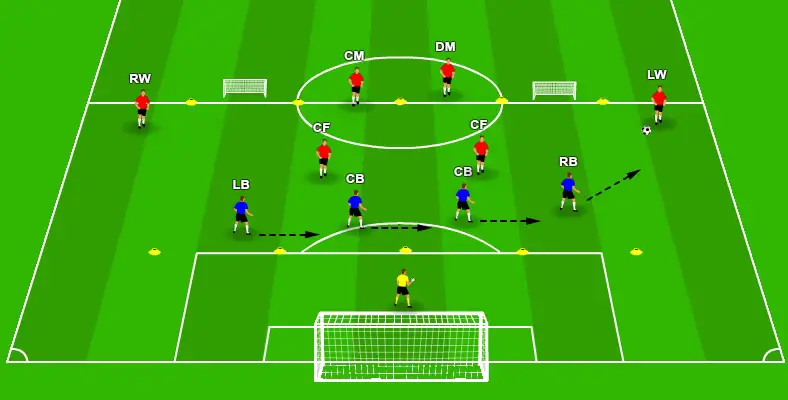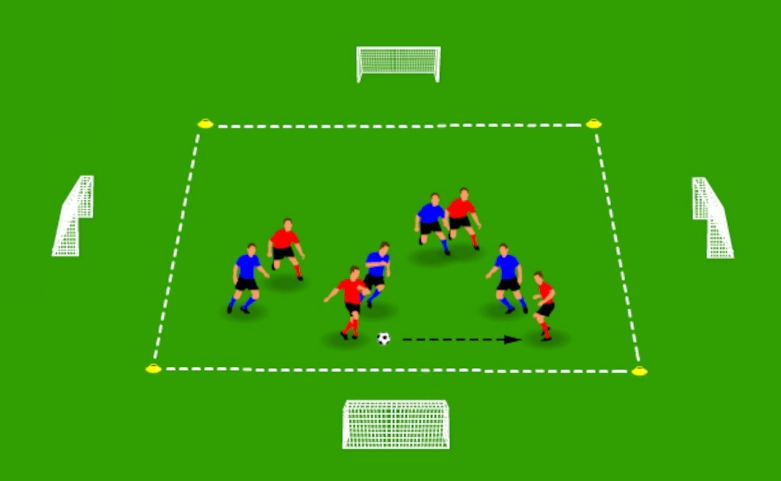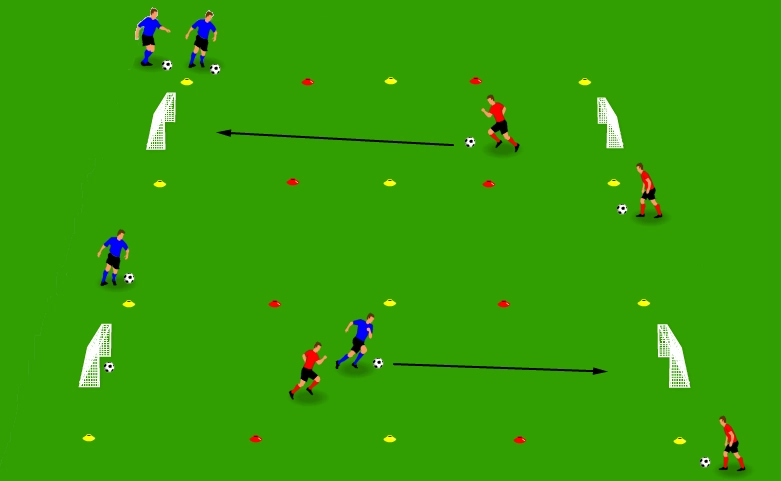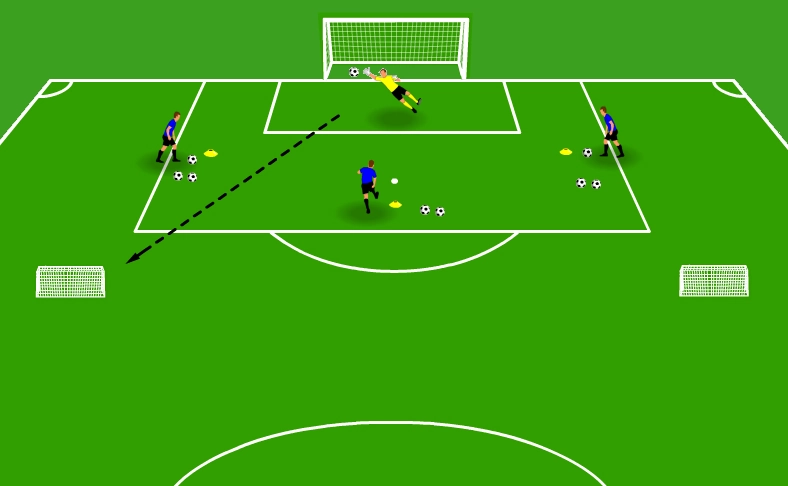Defensive drill - Backline coordination

Your team objective should be to make the field as small as possible for your rival. To achieve this, the backline of a football team should move as a block when playing zonal defending. This drill will help your team to practice backline coordination.
Backline general principles
There are different approaches to organising your defenders: man to man marking, a sweeper that sits behind the other defenders, a crescent line formation, a flat backline (not recommended) or a combination of all of them. In this blog, we focus on helping Sunday league/amateur teams. While many of these tactics, when done correctly, are helpful, some are more difficult to implement when you barely train one or two days a week. Therefore, our preferred approach is to use a crescent line formation and stick to it.
You may think that our approach doesn’t make sense because man-to-man marking feels easier to implement. It is quite the opposite. If you ask your players to man-mark in an amateur team, you risk having players running all over the place. Man-marking can create unwanted gaps in the defence and leave opposition players onside in dangerous areas of the field. You also need to know your opposition well to assign a personal mark, which is unlikely in amateur football. Therefore, zonal marking tactics are more effective.
Why a flat backline is a bad idea in football
Although some teams use a very flat backline, it is risky. With every player in the same line, if an opposition player beats one defender, there is no plan B, and your goal is exposed to a direct attack. Our preferred approach is to position players in a crescent formation or nominate a sweeper. In a crescent formation, the furthest player away from the ball sits in the deepest position on the field, while the closest player to the ball is in the highest position. The deepest player must be careful not to be too deep, leaving vertical gaps and opposition players onside. A simple tip for defenders is to look towards the ball’s side and move one or two steps back from their closest teammate.
When playing zonal defending, the defence should shift as a single block towards the side of the pitch where the opposition is running with the ball. It doesn’t matter if a player is unmarked on the opposite side of the field. If the ball is successfully crossed to the other side, defenders will have time to adjust their position. On the other hand, if the defence spreads too much because you are concerned about the free player, you risk leaving an easy gap right in the middle of the field.
The drill below will help your team understand and practise this style of defending. While the first impression is that it is more complicated than man-marking, it is more effective and not as tricky as it sounds.
Setup
You will need half of a football pitch, cones or tape to mark zones and a ball. Use the cones to set evenly distributed zones/channels, as shown in the picture. We assume a defensive line of 4 players for this post, and therefore we use 6 channels. Whatever numbers you use in your backline, add two channels to that number (3 defenders - 5 channels, 4 defenders - 6 channels, etc.).
This drill involves all your starting players. You will need at least 11 players. If you have 20+ players available, you can have two groups and use an entire field, a group in each half.
Instructions
This drill is similar to the defence vs attack game but focuses on defence. Follow these instructions:
- Only one defender per channel.
- The drill finishes at a set time (e.g., 15 minutes) or when a team reaches a target score.
- Attacking players are only allowed 2 touches: control and pass.
- Defenders can only touch the ball 3 times: interception, control and passing.
- Sliding tackles are not allowed.
- The defender must press up when the ball is in a channel, and the other defenders stay one or two steps behind.
- If no defender is in the ball’s channel, the nearest defender should shift into the channel and move up to press for the ball. The other defenders change in block to the channel left empty and stay deeper in the field. For example, in the first figure below, the ball is coming from the right-wing with no defender in that channel. The right-back (RB) moves to this channel and up, leaving a gap in his channel that must be filled by the centre-back and so on. If the ball comes through one of the channels in the centre, the outer channels must be left empty.
- Defenders not pressing for the ball must stay one or two steps back from their closest teammate in the ball’s direction.
- Defenders can score on the small goals, and each goal is worth 2 points.
- Scoring on the big goal is worth 1 point.
- The attacking team can score 1 point by calling out these defence mistakes if not corrected within 3 seconds: “flatline” or “empty channel”.
Feel free to add variations or remove some rules if your players struggle following these instructions. You can also have a second-round in which the drill becomes a simple attack vs defence game without channels nor calling out mistakes for points.
 Defence starting position
Defence starting position
 Defence shifting to the right
Defence shifting to the right
Takeaways
This drill teaches to press, close down passing lanes and read the player’s intentions on the ball. In addition, this exercise provides these benefits:
- Positioning. Defenders must move to press the ball, cover gaps and support their teammates.
- Teamwork. Individual efforts are not enough in defence, and the backline must move as a single block. This drill requires defenders to work as a team.
- Passing. The only way of moving through the field in this exercise is to pass the ball accurately. As a result, players will improve their passing technique and positioning.
- First touch. Because the number of allowed touches is restricted, players must improve their first touch to control and pass the ball.
- Football IQ �?" Awareness. Both attacking and defending players have to be aware of the defenders’ position on the field. Calling out defence errors will help offensive players to identify gaps that they can quickly move into during actual games. On the other hand, defenders will identify gaps that they need to fill.



